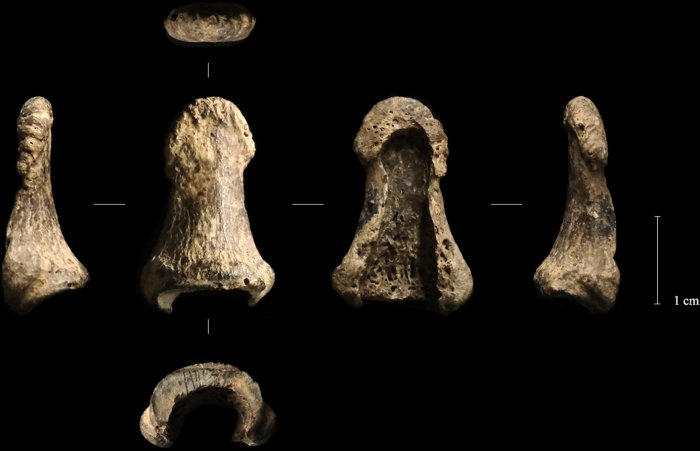Conny Waters – AncientPages.com – The famous mammoth ivory boomerang from the Oblazowa Cave was created around 42,000 years ago (several thousand years earlier than previously thought) and is the oldest known boomerang in Europe and possibly worldwide.
 Entrance to the Oblazowa Cave. Imae credit: Jerzy Opioła – CC BY-SA 4.0
Entrance to the Oblazowa Cave. Imae credit: Jerzy Opioła – CC BY-SA 4.0
The cave is a 9-meter-long chamber that Neanderthals first inhabited, followed by Homo sapiens. Located near the village of Nowa Biala in the Western Carpathian Mountains of Lesser Poland Voivodeship, southern Poland, the site is one of the most significant Paleolithic sites in the country.
New research led by Professor Sahra Talamo of the University of Bologna and archaeologist Pawel Valde-Nowak of Jagiellonian University in Cracow has shown that this discovery will significantly impact current knowledge about the presence of Homo sapiens in Poland.
Modern genetic and isotopic analyses have confirmed the boomerang’s age; however, scientists remain uncertain whether the artifact served as a symbol or a tool for everyday use.
Excavations at the Oblazowa Cave began in 1985 under the leadership of Professor Pawel Valde-Nowak of the Institute of Archaeology at the Jagiellonian University in Kraków. In the cave’s center, the team discovered valuable ritual objects and a circular structure of boulders (more than 60 kilograms each).
This material was likely transported from a nearby river and intentionally placed within the cave. Near the entrance, a 2-meter-deep pit was excavated to access the inner area.
The Boomerang made of mammoth tusk of Oblazowa Cave from layer VIII. Image -source
Near this stone arrangement, researchers found a boomerang, an over 70-centimeter-long, curved, polished fragment of a mammoth tusk, a phalanx of Homo sapiens, a Conus shell, antler wedges, a bone bead, and two pendants on an arctic fox canine. While the boomerang was discovered intact, the two pendants and the human fossil were recovered first during the sieving of sediment collected during the excavation of the boomerang. The analysis showed that the phalanx is the oldest Homo sapiens bone unearthed and identified in Poland.
The entire collection of artifacts was covered with red ochre dust, which may indicate the ritual significance of this valuable artifact. According to Prof. Valde-Nowak, the boomerang was undoubtedly an essential object for the cave’s inhabitants.
Since no ivory fragments were found at the site, the boomerang must have been crafted elsewhere and carried as an essential object for the Homo sapiens at Oblazowa Cave.
The use of ivory for making this boomerang is particularly interesting, as similar artifacts were primarily made of wood.
The discovery of the boomerang object is a noteworthy anomaly within the European Paleolithic record, given that it is commonly accepted that Aboriginal hunter-gatherers were the original inventors of boomerangs, using them both as recreational items (such as toys) and survival tools in Australia’s demanding environment millennia ago.
Left distal phalanx of Oblazowa Cave from layer VIII. Photographic record of the finding before sampling (from left to right: ulnar, dorsal, palmar, and radial views). Image source
The boomerang from Oblazowa resembles the Queensland type of Australian boomerangs, and experimental analyses have confirmed its functionality as a non-returning boomerang.
Moreover, a noteworthy part of the discovery is the nearby location of a human left distal thumb phalanx. Due to the limited number of lithic artifacts and bones within this archaeological context, the human fossils and the boomerang might have been components of a shamanistic ritual. This hypothesis draws parallels with rock art evidence of portrayed human hands with missing digits found in the Iberian Peninsula and France, as noted in the paper.
The boomerang is a remarkable example of human artistic innovation during the Early Aurignacian period (43,000 to 26,000 years ago). The study did not focus on whether the boomerang served a ritual or utilitarian function; however, it shows the artifact’s association with other ornaments discovered at Oblazowa Cave, a place where Homo sapiens lived.
More than 40,000 years ago, early Homo sapiens in Europe began to develop their creativity and expression, creating art, figurines, and symbolic tools.
Written by Conny Waters – AncientPages.com Staff Writer


